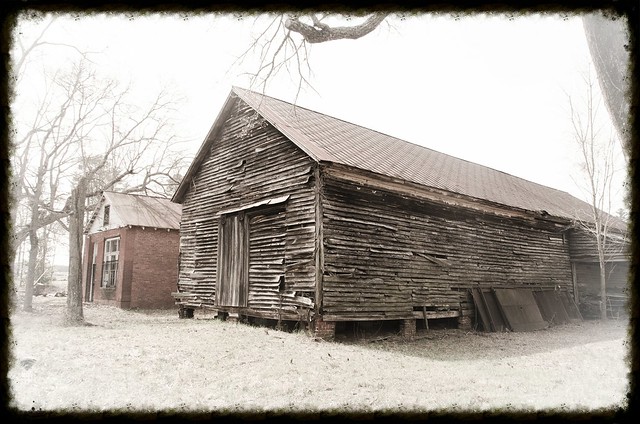
So far our crew from the Laurens County and Clinton Museums had visited several locations in Cross Hill (Part 1, Part 2). Now we were on to our last stop, a true ghost town.
While Cross Hill is not yet a ghost town, Mountville has reached that stage. I hesitated to add it to my list because there is still an active post office, a couple of active churches, and I have cousins and friends with Mountville mailing addresses. It is still a viable community. However, any semblance of a town is long gone.
We pulled up to what is left of the center of commerce – three lone buildings just off of Highway 72.
All that remains is the grange building, a warehouse, and an old store front. We took some time to explore as best we could.
The warehouse has sliding doors with a unique wheel configuration. I’ve not seen any like these elsewhere.
The roof of the warehouse was pressed tin with a pattern embedded in each square shingle.
There was no way to see what was inside the warehouse. A side shed held some scraps of wood.
The old storefront was also not what it appeared to be. The building was wrapped in pressed tin with a brick pattern. I guess it was meant to look like real brick.
The interior of the store looked like it was being used for SCDOT storage. If so, they hadn’t moved any of these materials in years. The same stuff was here the last time I came by.
At one end of this street was another set of what appeared to be industrial buildings or warehouses.
The grange building was the most intact, and looked like it was still in use. Julius was from the area, and said that at one time this had been a bank. There were tables set up inside, and it looked like there was still some activity.
The 1932 Sanborn Map of Mountville lists the grange building as a “vacant bank”, so Julius is correct. The map also shows a depot, grist mill, two other general merchandise stores, and a couple of other buildings, but not much more than that. There was much to Mountville to begin with.
According to the South Carolina Archives School Insurance Photographs, Mountville had two schools – a high school and two story graded school. These look like spectacular buildings, but neither the Sanborn Map nor the GNIS data indicate the location of these two schools.
Speaking of schools, we had one last stop in the area. On the way from Cross Hill to Mountville we passed Midway School Road. I had seen in Google Earth that the school was extant, and had caught glimpses of the school from Highway 72. I wanted to check it out, so we headed back down 72.
Midway School was surrounded by barbed wire and chain link fencing. To me it looked like an old “equalization school.” These were schools built in South Carolina for segregated black students under the “separate but equal” rule. Many times these schools replaced severely substandard buildings or crumbling Rosenwald schools. Now, many of these old schools, such as Midway, are left in ruins.
Either Mary Ellen or Elaine mentioned that this had once been an antique store. Looks like they would have had plenty of room for it.
We headed on back into town and the five of us had a nice late lunch together. Julius, Mary Ellen, and Elaine wanted to continue the trek on down to Duncan Creek Presbyterian and the Renno/Stomp Springs area. However, Sean and I both needed to get back up the road. Looks like there will be more opportunities for trips like this with folks from these museums.
Here is a map of the locations we visited on this trip:
Sean’s photographs from the trip can be found on his Flickr site. Mine are in the slideshow below:
[fsg_gallery id=”38″]

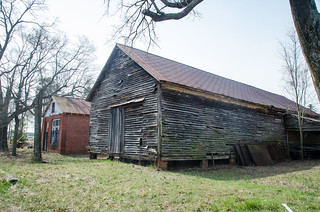



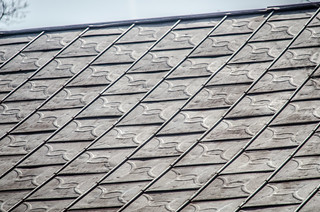

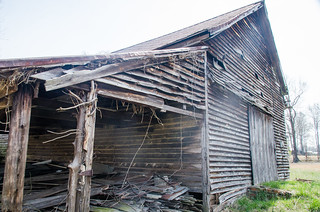

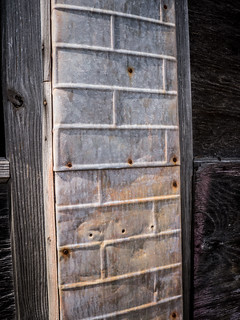


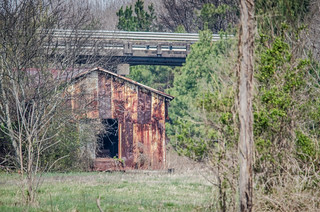

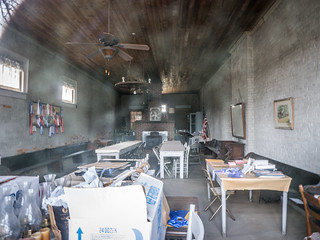


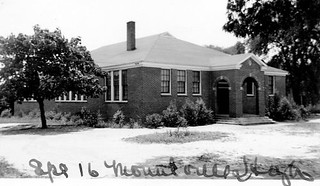


I live in Mountville, near the “new” schoolhouse which is still standing and is now used as the Baptist church social hall. Until it was demolished about 15 years ago, the two-story school in your photo stood directly behind this existing structure. This is located on Mountville Road, behind the Mountville Baptist Church. Mountville still has an active grange chapter which meets in the old bank/grange hall. Mountville tidbit: The original owner of my house developed a couple of camellia varieties, and one of the original bushes is still flourishing in the yard. It’s named the “Jesse Bryson” for his father.